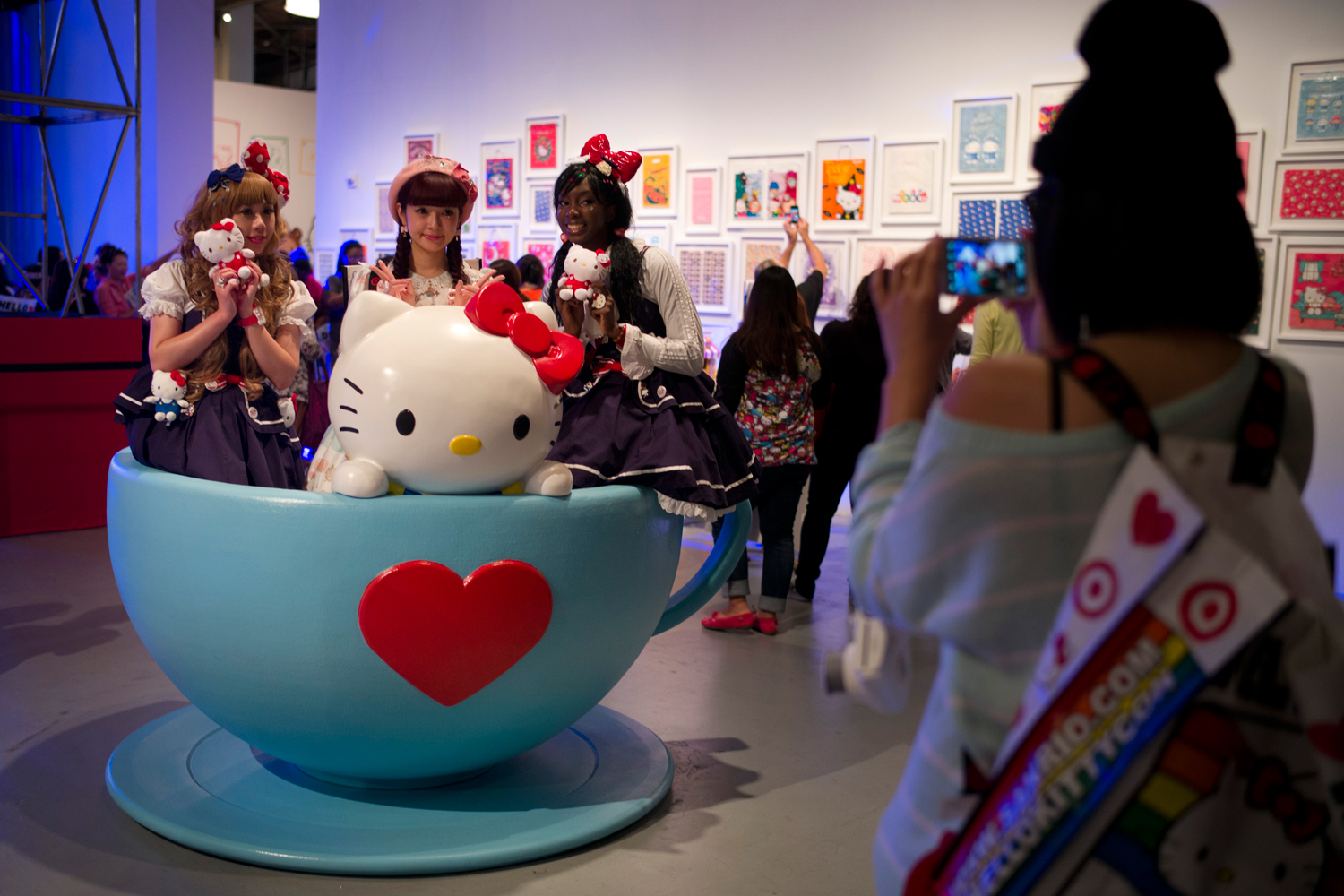
This week, about 25,000 of the world’s most devoted Hello Kitty fans are expected to assemble in LA’s Little Tokyo district for the first-ever Hello Kitty Con–a four-day celebration of the character’s 40th birthday, going on now. Created by the Japanese company Sanrio, the little white cartoon has become one of the best-selling licensed entertainment characters ever, generating an estimated $8 billion annually for Sanrio, according to a company spokesperson.
The event, which started October 30 and runs through November 2, has been a long time coming for her most fervent acolytes—adult women who played with her as children in the 70s and 80s and still incorporate her into their daily lives. The sold-out event has acres of adorableness–from Kitty costumed fans to crystal jewelry and even historic artifacts like the very first product to feature the character –a coin purse from 1974, which is on display behind velvet ropes.
Despite her seemingly benign and utterly adorable appearance, the character has become a polarizing cult figure around the world. Fans who collect everything Hello Kitty say she’s empowering, or at the very least a harmless hobby. Critics say she’s a sexist throwback to a time when girls, particularly Asian girls, were supposed to be cute and silent (the character has no mouth). Meanwhile, in some feminist circles, she’s also been embraced as a counterintuitive symbol of freedom to be feminine and strong. And to further muddy the picture, Sanrio recently clarified that the character is actually a third-grade girl and not a cat. A 40-year-old girl who looks just like a cat that is.
To get to the bottom of the Hello Kitty phenomenon, we asked experts and female fans to reflect on Hello Kitty “the girl” and the outsized influence she’s had on the culture over the last 40 years.
Inside the First-Ever Hello Kitty Convention
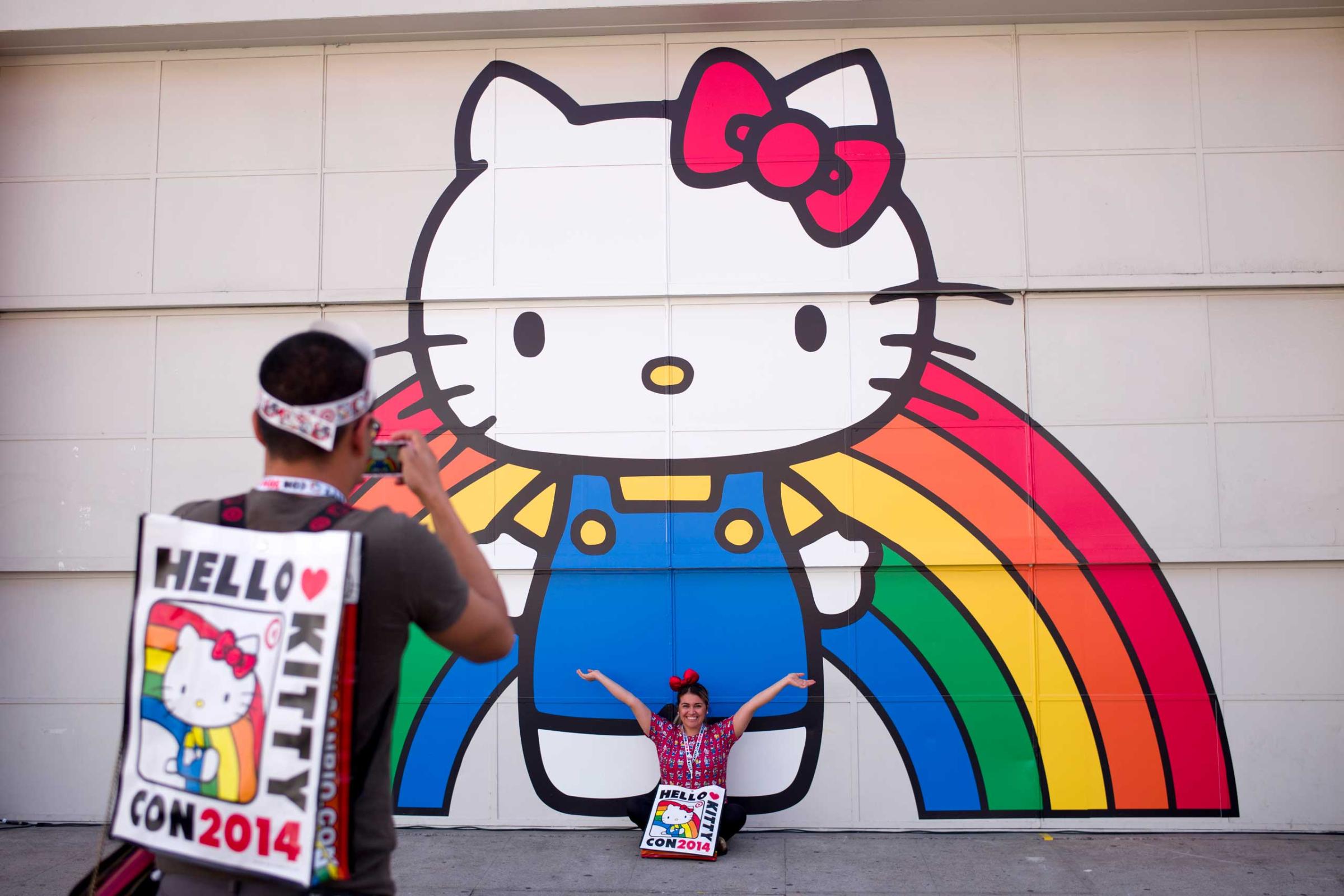
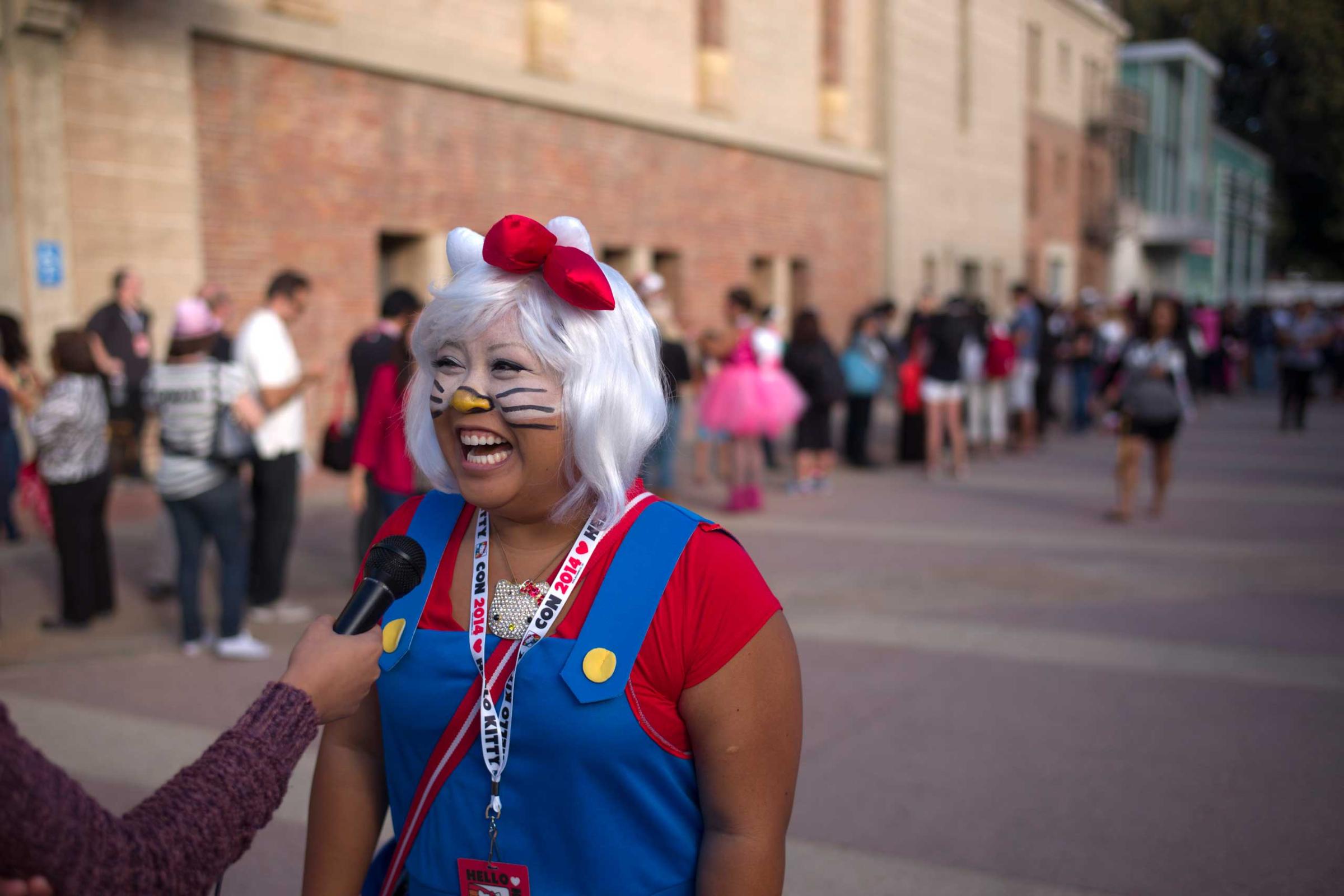
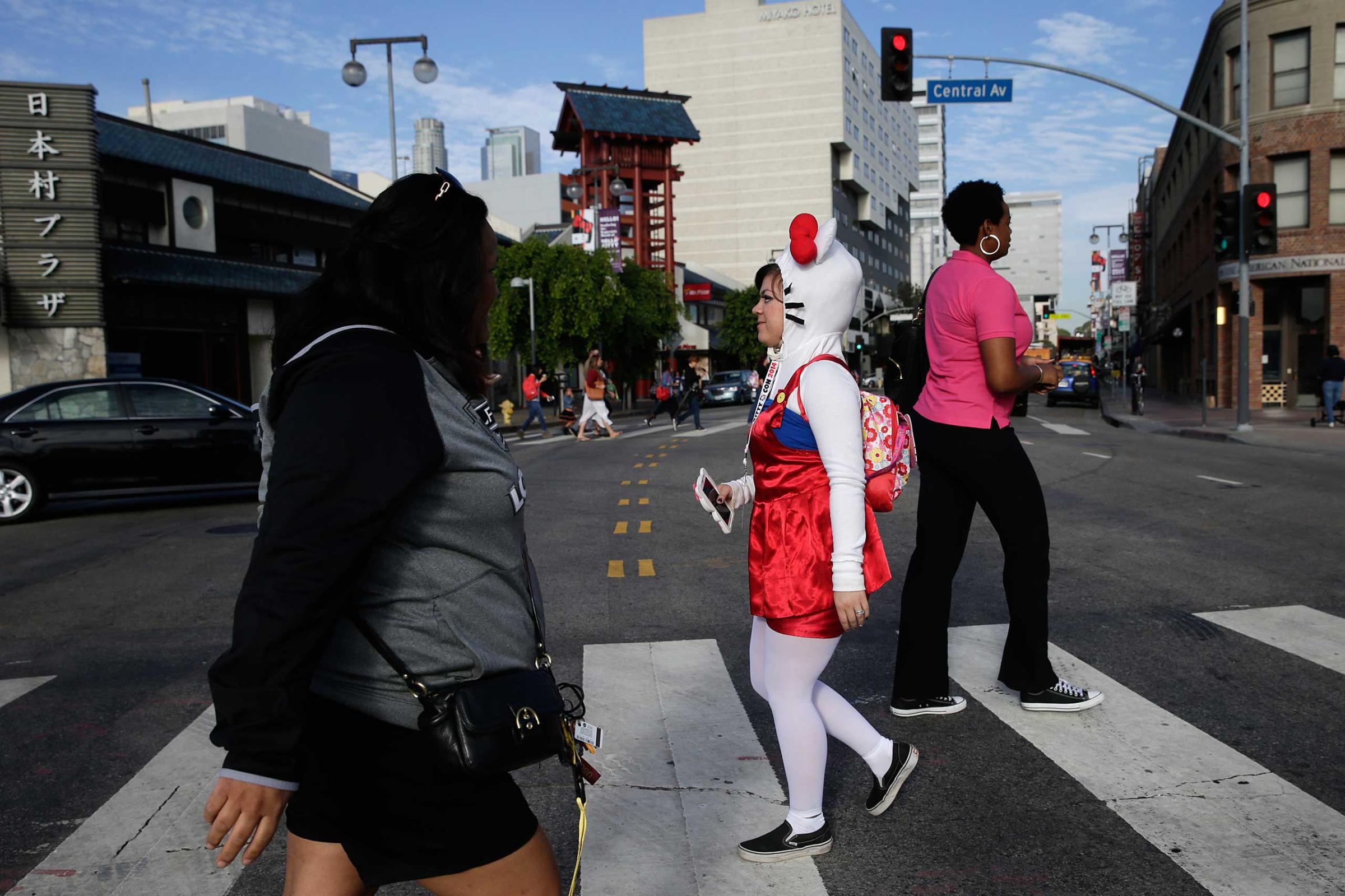
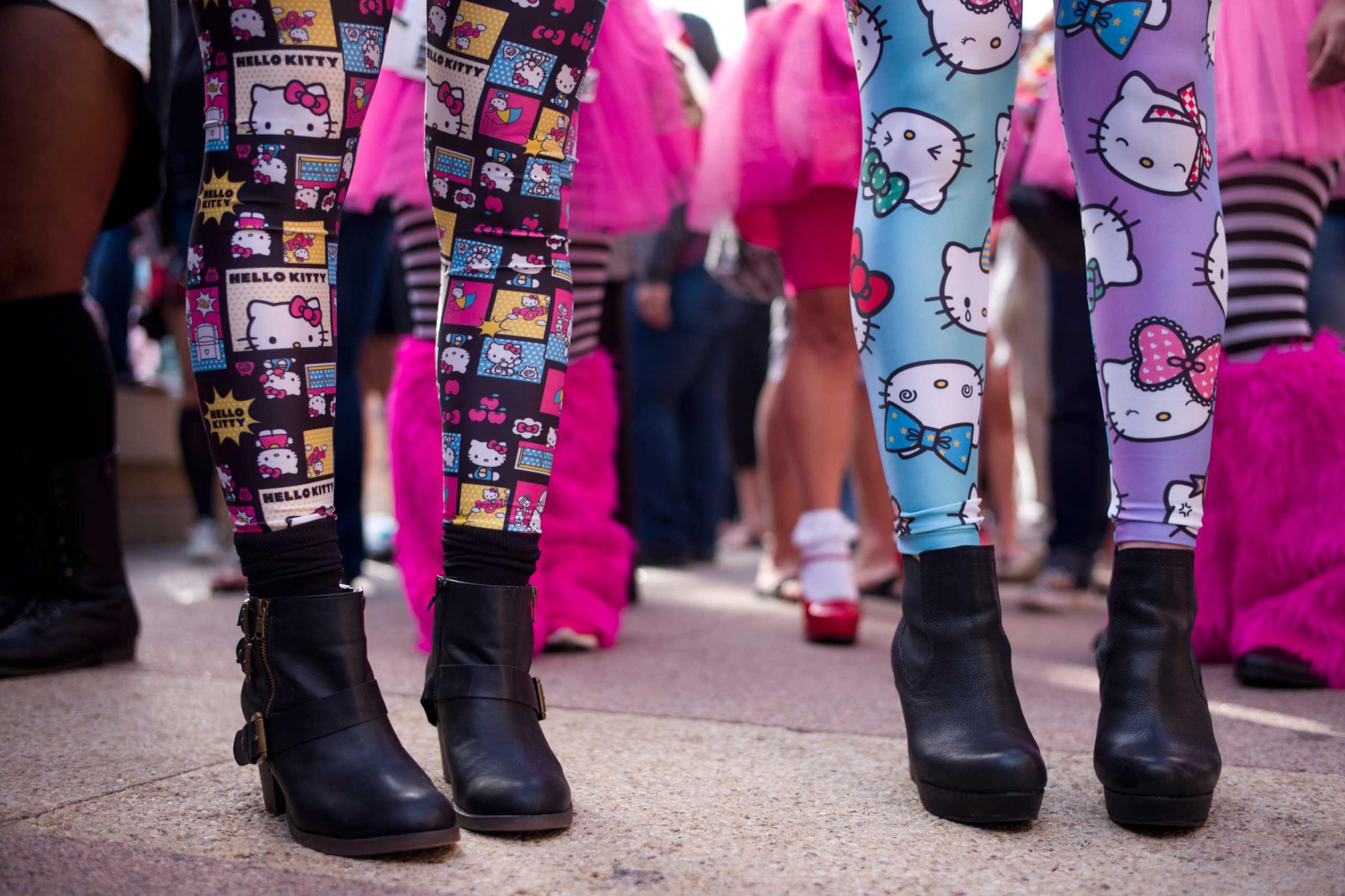
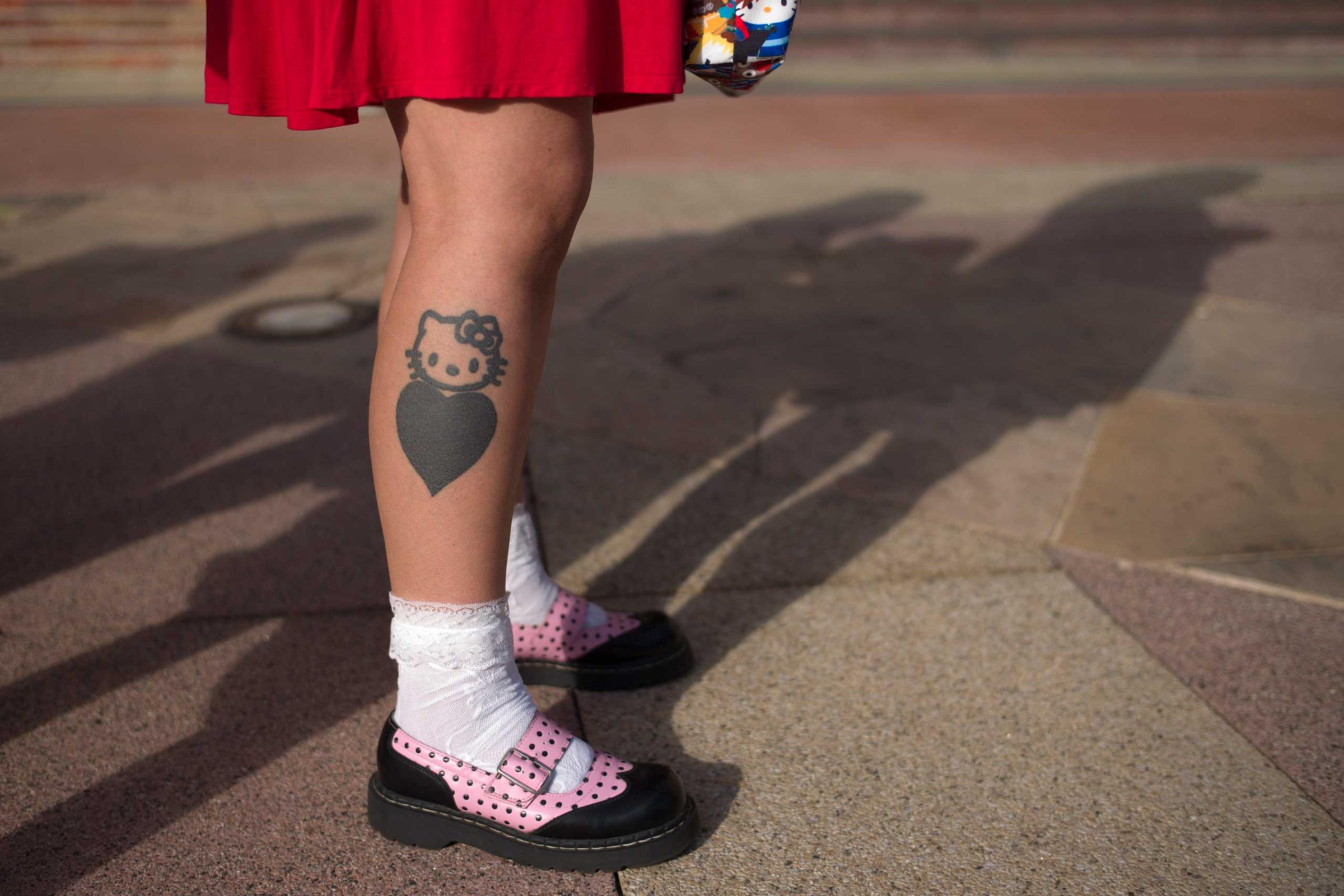
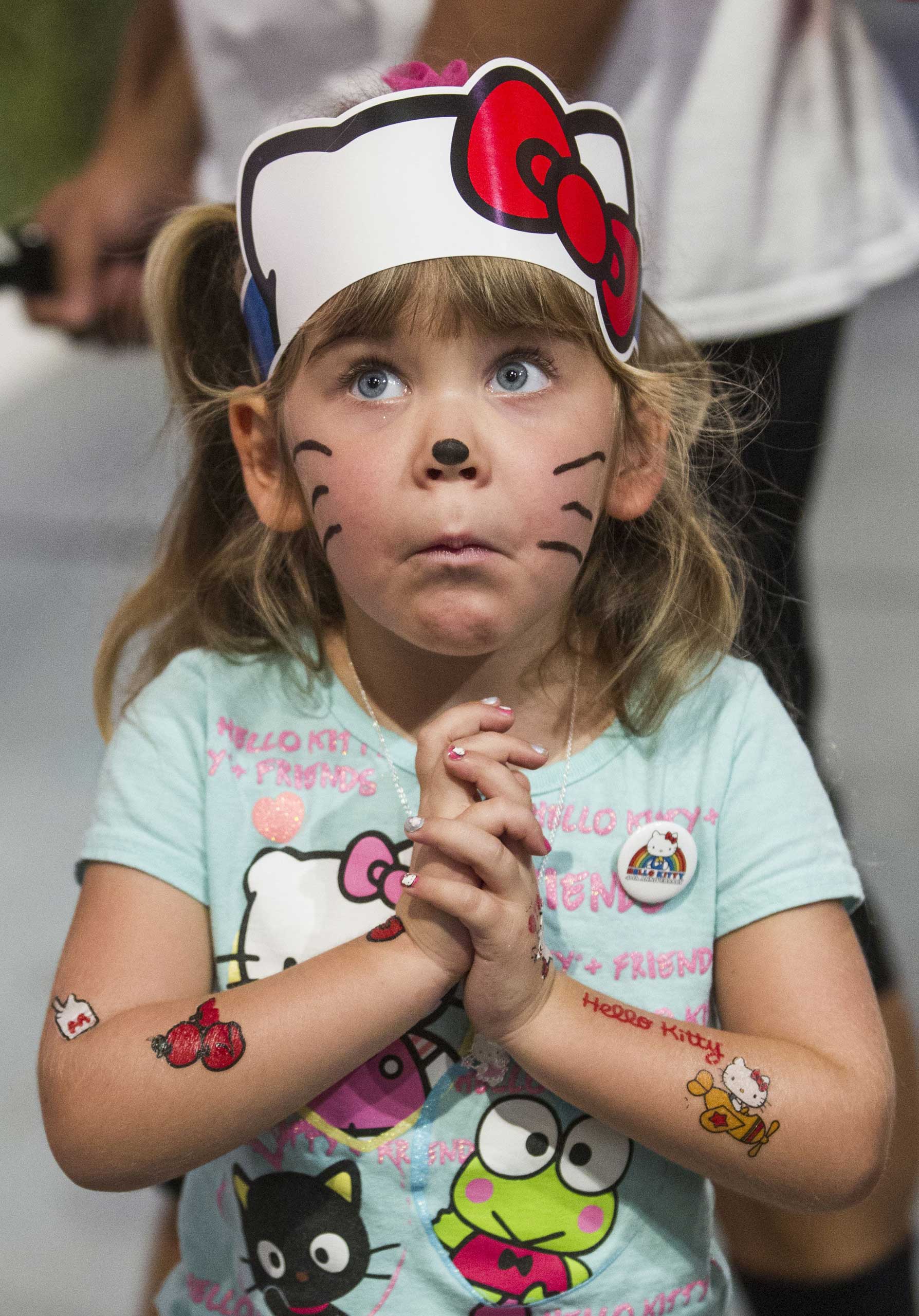

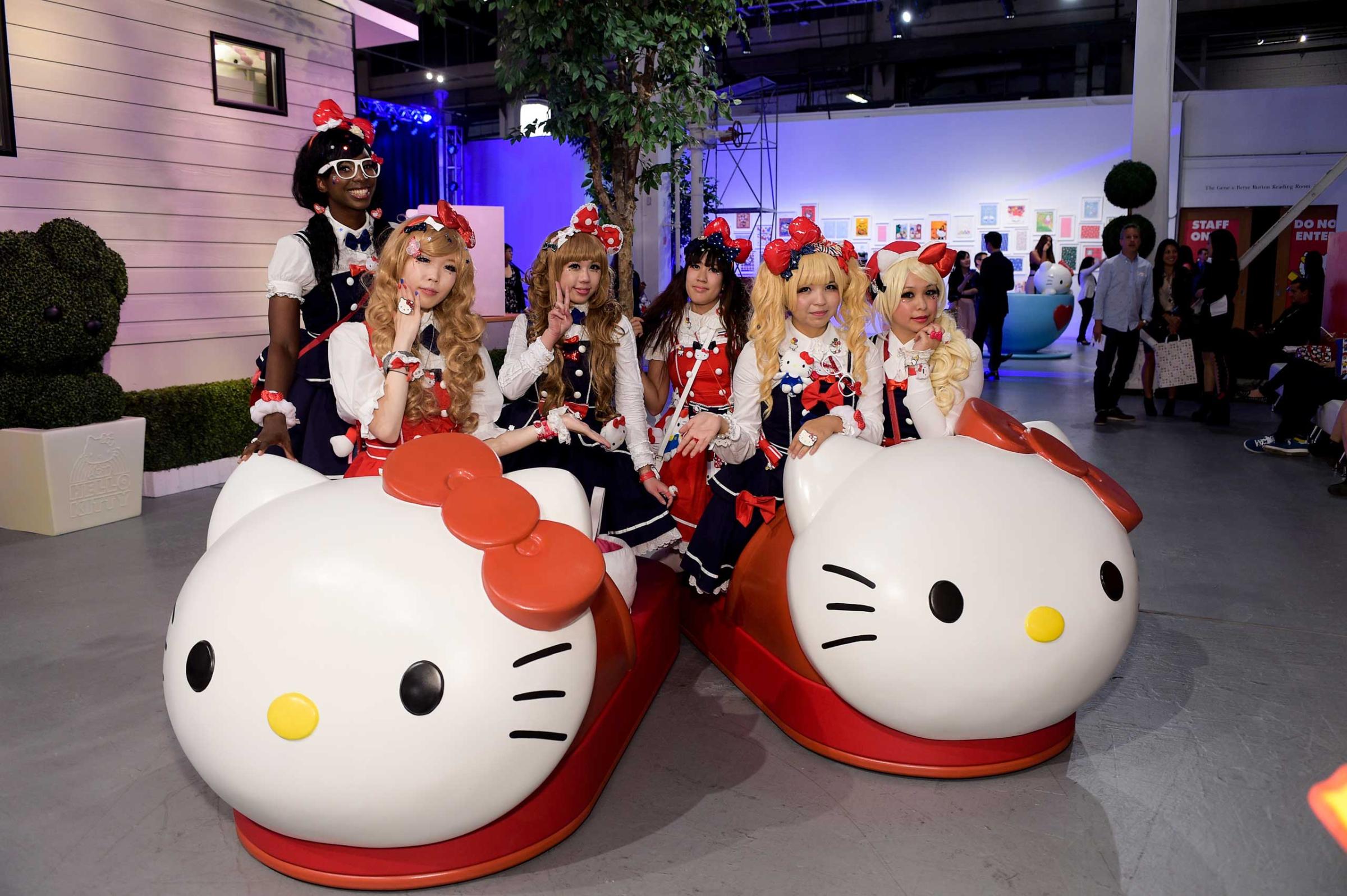
The first question is of course, why doesn’t she have a mouth. She’s all eyes. Sanrio has always said Hello Kitty doesn’t have a mouth so people can project their feelings onto her, imagine she’s happy or sad when they’re happy or sad. “She is so empowering because she can be anything you want her to be,” says Jill Koch, Senior Vice President of Brand Management & Marketing at Sanrio. “It’s a lot more powerful to not have to speak.” That way, “women feel like Hello Kitty listens,” says Yuko Yamaguchi, Tokyo-based head designer of Hello Kitty for more than 30 years. “She makes you feel understood.”
Jamie Rivadeneira, owner of Japan LA, a boutique that sells Japanese pop culture merchandise, explains why she has captured the imagination of so many little girls for so many years: “I was naturally quiet as a child, and I related to Kitty because she didn’t talk. She doesn’t have a mouth.”
Hello Kitty’s lack of mouth may also just reflect the Japanese way of showing emotion, which doesn’t always involve expressing feelings using words, according to Christine Yano, anthropology professor at the University of Hawaii, who curated the Hello Kitty exhibit at the Japanese American National Museum (JANM) in LA with Rivadeneira. In some ways, Hello Kitty has become the international representation of Japan’s culture of “kawaii,” which are items that are cute and meant to spread happiness and promote friendship. The little cat-like girl has become a touchstone for many Asian girls who’ve grown up in America. “She was made by an Asian company, so unlike Barbie, it was cool to have this Asian cartoon that’s ours,” says Kristina Wong, 36, a Chinese-American writer and comedian. “The first people to get Hello Kitty stuff were Asian girls.”
But not everyone’s a fan. “In the West, having a mouth is important because it gives you a voice, which is power, so some see her as anti-feminist, anti-assertive, anti-vocal,” explains Yano, author of Pink Globalization: Hello Kitty’s Trek across the Pacific. And indeed, the quiet Kitty has gotten a lot of flack on some Western parenting blogs. One mother writes, “Parents raise their daughters to be confident, articulate and outspoken,” so Hello Kitty’s lack of mouth sends girls “mixed messages about self-esteem,” while another writes, “It’s hard to shout, ‘I am woman, hear me roar,’ sans mouth,” after her three-year-old daughter fell in love with the character.
Likewise, a 2004 editorial in The Japan Times, an English-language Japanese newspaper, argued UNICEF shouldn’t be using Hello Kitty to raise money for girls education programs noting that “someone needs to explain how a cat with no mouth can be a spokesperson for anything—especially girls’ education—and how an image that embodies female submissiveness is supposed to help banish gender-based stereotypes. Kitty is soft and pliable, doesn’t speak and sports a cute bow on her head: There’s your role model, girls!”
She has also gotten flack when she’s been seen as a symbol of the quiet, passive and submissive Asian woman stereotype. Take Avril Lavigne’s 2014 music video for “Hello Kitty,” which critics bashed because she used expressionless Japanese women as back-up dancers, who looked like “props,” as she screamed “Hello Kitty, you’re so pretty” over and over again.
“Avril does not relate to, look at, talk to, the Japanese women in the video,” says Sharon Kinsella, author of Schoolgirls, Money and Rebellion in Japan. “I find the presentation of the Japanese women as asexual and silent background dancers with mute inscrutable expressions embarrassingly passé and disturbingly colonial in undertone.”
Meanwhile feminist blogs railed against a 2012 ad for Sephora’s Hello Kitty “Head of the Class” makeup collection that shows a woman in business attire putting down her book, erasing math equations on a chalkboard and applying Hello Kitty makeup, arguing the brands are teaching girls that looking beautiful is more important than smarts. “The feminists’ argument is a perception that women might be infantilized by this cute product that doesn’t speak to their full powerful womanhood or their sexuality,” says Merry White, anthropology professor at Boston University and author of Coffee Life in Japan.
The Riot Grrrl movement of the 1990s adopted Hello Kitty as a mascot to show punk girls and women that it’s OK to incorporate cute things into their edgy personas, says Yano. The idea was—and it still applies today—feminists believe in freedom of self-expression, so women can enjoy “cutesy” and “girly” things like Hello Kitty whenever and however they want to, as long as they aren’t doing it because they think they need to in order to be considered feminine or to please men, explains performance artist and writer Denise Uyehara, 48. “You can be cute, but you have to ask yourself, am I being cute because it’s the only way I can get through life, or can I speak my mind directly without using a high cute voice, which is often associated with Hello Kitty and being Asian?”
Kinsella has a theory about Hello Kitty’s popularity at a time when Japanese women were distancing themselves from those old stereotypes. Even as women in Tokyo in the 80s started shifting from primarily family roles to office jobs with higher wages during a “period of unprecedented credit boom wealth” in the city, they were still in an “awkward” position in which the social structure was “hostile” to young, working, independent women. “So liking Hello Kitty, being a bit childish, is a bit like acting like the kind of girl who is acceptable—a little school girl with nice, girly pastimes,” she argues. “They’re suger-coating their obtrusive new presence in the labor market by covering themselves in pink and candy and Hello Kitty, disguising themselves as harmless.”
And for American fans, she’s also an escape from the realities of adulthood. Jennifer Masaoy, 35, says she started making papercrafts of Hello Kitty as a hobby to cheer herself up at a “stifling, repetitive, boring, miserable” job: “Hello Kitty is a way for me to escape work stress, all of the stuff you have to do as an adult to take care of yourself.”
So will this 40-year-old school girl ever get to grow up? Writer and comedian Kristina Wong says she hopes so: “Let’s see Hello Kitty at her first job when she has to go on maternity leave. That’s when we’re going to find out whether she’s a feminist or not a feminist. Let’s put her in real situations because cuteness will only get you so far, and there are some moments in life when you actually have to kick some a**.”
More Must-Reads from TIME
- How Donald Trump Won
- The Best Inventions of 2024
- Why Sleep Is the Key to Living Longer
- Robert Zemeckis Just Wants to Move You
- How to Break 8 Toxic Communication Habits
- Nicola Coughlan Bet on Herself—And Won
- Why Vinegar Is So Good for You
- Meet TIME's Newest Class of Next Generation Leaders
Write to Olivia B. Waxman at olivia.waxman@time.com